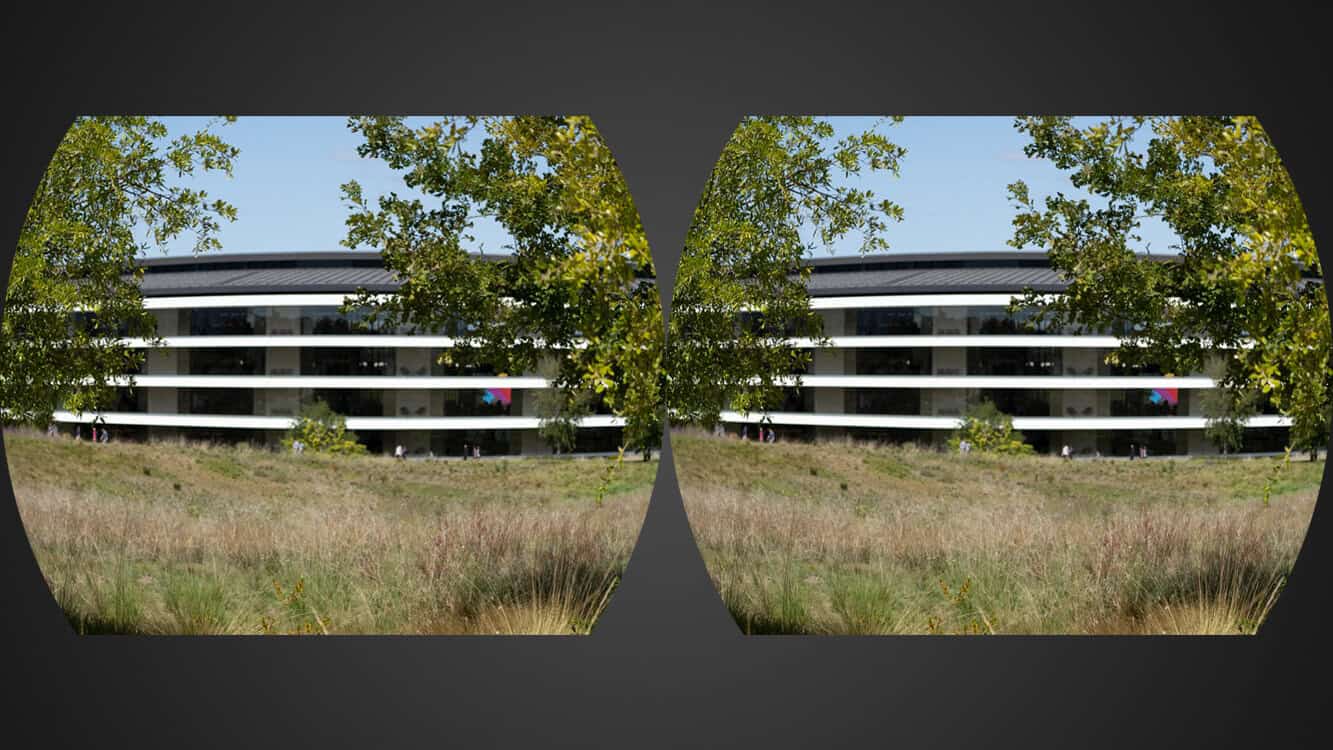
The biggest AR Apple news came well after the lights darkened on the Steve Jobs Theater stage yesterday. Apple made virtually no mention of AR during the iPhone event. It was only afterward when Apple released a new beta for iOS 13 and, as anticipated, it included significant references to a new stereo AR framework and some sort of headset.
Despite some experiments with phone-based AR in recent years, Apple has not announced any kind of AR headset or support for stereo AR. So mentions of such technology in an operating system that’s coming to iOS devices soon is startling. It wouldn’t be the first implementation of stereo AR on an iPhone. Disney and Lenovo have collaborated for the last two years on a very inexpensive and simple AR headset that works with iOS and Android. The AR is composed of two nearly identical images. When the phone goes into the headset, each image is reflected to one of your eyes and the images on screen suddenly appear as a single 3D image.
We don’t know if the stereo AR referenced in the iOS 13 Beta behaves the same way, but it’s a possibility. Heck, all the talk about stereo AR and headsets could be about third-party products like the Lenovo headset. Or it could be something simple like Google Cardboard for AR. What’s been found so far in the beta doesn’t make it clear what’s coming.
But the documentation does reference Garta, hardware that appears to originate with Apple and appears to be some kind of head-mounted AR device. MacRumors first referenced Garta on September 2. But an AR headset has been in development at Apple a lot longer.
Both Financial Times and Bloomberg reported on a headset project in March of 2017. In April of 2017, Gizmodo reported on incident reports compiled by an Environment Health and Safety contractor that seemed to confirm the development of some kind of headset. Two separate incident reports noted eye injuries incurred while testing prototypes of some sort.
Then in the latter part of 2017, Tim Cook told The Independent that the tech for high-quality AR glasses didn’t exist yet:
“But today I can tell you the technology itself doesn’t exist to do that in a quality way. The display technology required, as well as putting enough stuff around your face – there’s huge challenges with that.
“The field of view, the quality of the display itself, it’s not there yet,” he says. And as with all of its products, Apple will only ship something if it feels it can do it “in a quality way”.
“We don’t give a rat’s about being first, we want to be the best, and give people a great experience,” he says. “But now anything you would see on the market any time soon would not be something any of us would be satisfied with. Nor do I think the vast majority of people would be satisfied.”
And the problem is it still doesn’t. I say this as someone who has used cutting edge AR headsets. I’ve tried out both the HoloLens 2 and the Magic Leap headsets and they’re impressive, if not exactly mainstream ready. Microsoft nailed the AR user interface and Magic Leap is doing incredible stuff in terms of AR image quality.
But the headsets themselves are still giant dorky monsters and that’s not because Magic Leap and Microsoft are made up of giant dorks. They have to be big and dorky because it’s challenging to get a high-resolution translucent image in front of your eyeball that overlaps with the real world.
Assuming Apple created an AR display that’s better than the competition and designed a product people would want to wear, there’s still the matter of how it will be powered. The HoloLens 2 puts the battery and the computer on the back of the headset—turning it into a counterweight for the display. The Magic Leap packs it all in a little Discman-like device you wear on your waist.
The documentation found by developer Steve Troughton-Smith gives you a reasonable idea of what Apple might attempt in a device. Theoretically, the headset could be a passive device that lets the iPhone do the work. Think of it as the Apple Watch—it needs to be tethered to a phone to do anything beyond telling time.
The Apple Watch is perhaps the best Apple comparison for a theoretical headset. The Apple Watch succeeded not in being first to the market but in finding the right blend of aesthetic design, features, and ease of use. The Apple Watch isn’t perfect—it still only lasts 18 hours on a charge—but it did something people have coveted for a long time just well enough for you to ignore its flaws.
That’s what Apple AR headset will need to do as well, and given the state of the display technology, it’s unlikely it can master that blend right at this moment.
So is Garta Apple’s long-awaited AR headset? There’s certainly a possibility, even if it’s very remote. But perhaps Garta is something simpler: Apple’s version of a developer console. A big and unwieldy device intended only for developing software.
Whatever Garta turns out to be, it’s clear that while Apple hasn’t made its AR plans public, it’s still very much on the company’s mind.

